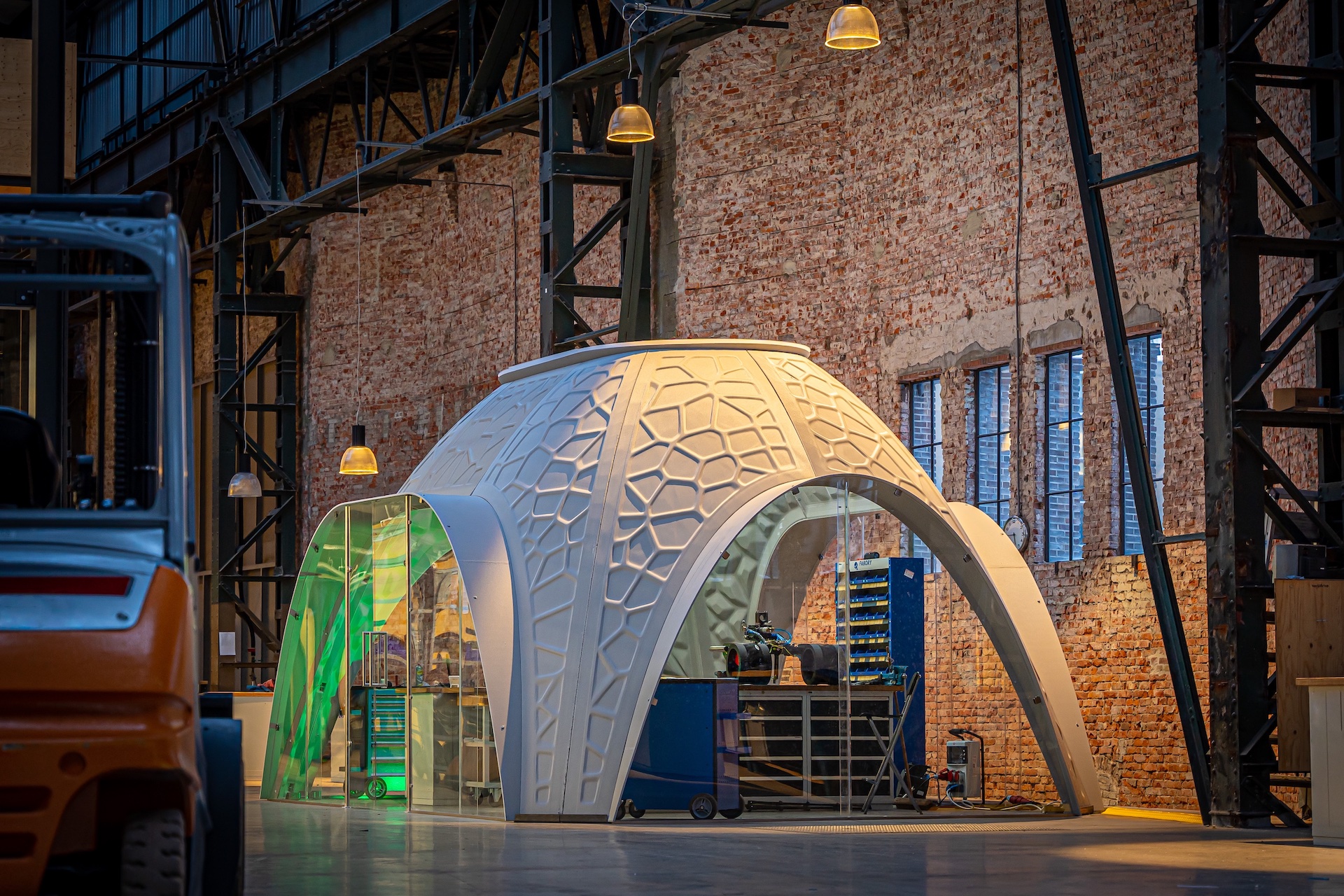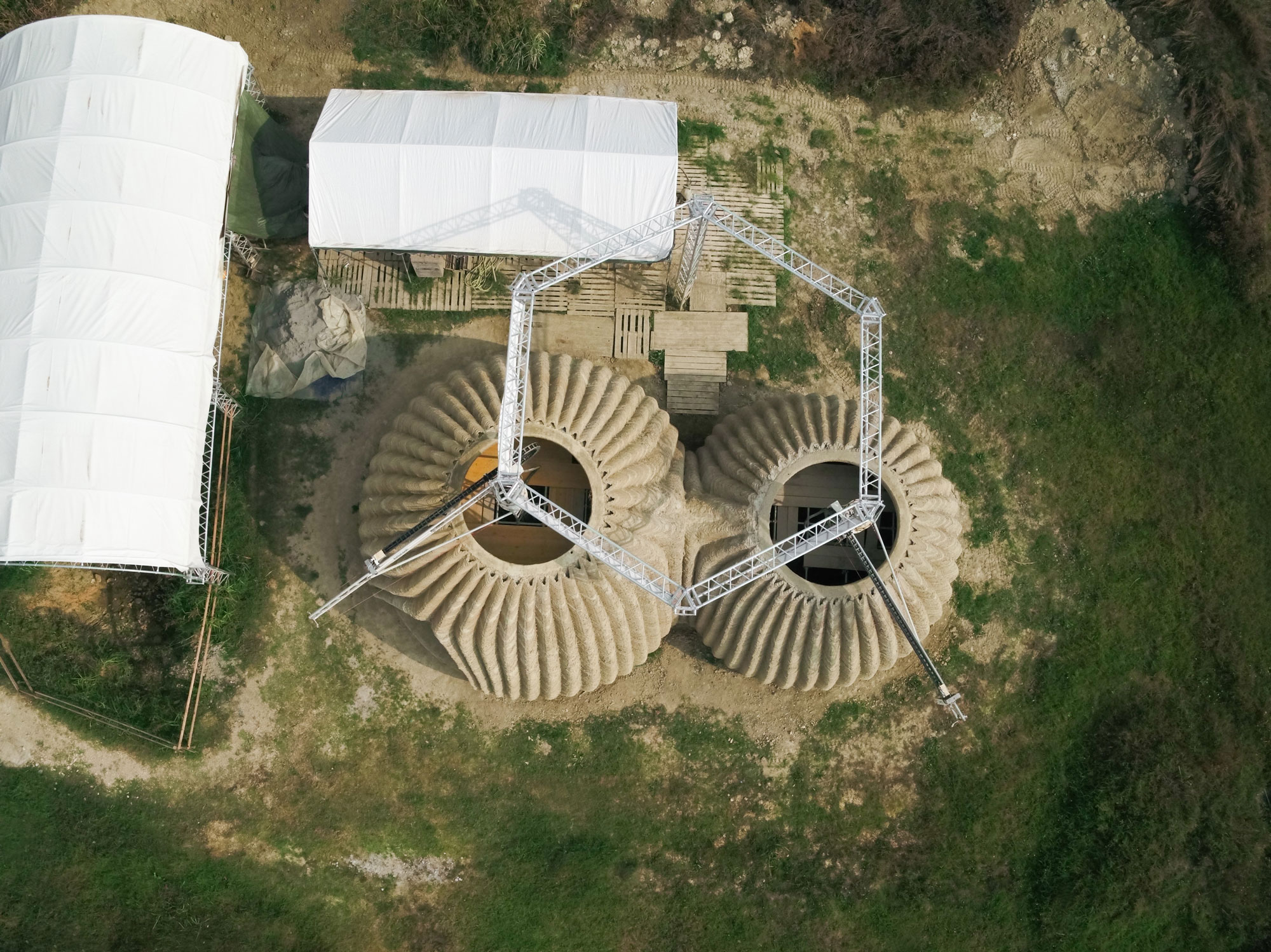Dutch 3D printing service Royal3D has 3D printed a modular and flexible workspace pavilion within the Rotterdam Makers District on behalf of the Port of Rotterdam Authority, using plastic PET waste and a Continuous Fiber Additive Manufacturing (CFAM) 3D printer.
Parametric design and artificial intelligence (AI) firm the ARCHITECH Company worked with Royal3D to design the pavilion, named the R-IGLO. The ‘R’ stands for ‘reusable, recycled, Rotterdam, and Royal3D’, while the ‘IGLO’ element refers to the pavilion’s domed shape.
The R-IGLO is currently a pilot project, but if successful will be included in the Port Authority’s Real Estate department portfolio to offer its tenants a sheltered and comfortable workspace.

Reusing waste PET for the R-IGLO
Entrepreneurs within the Rotterdam Makers District embarked upon creating a comfortable workspace that was both flexible and sustainably built, after recognizing a growing need for well air-conditioned assembly workplaces in the area. Rotterdam’s Port Authority is currently seeking to redevelop outdated port areas with the goal of creating an attractive business climate for next-generation maritime manufacturers, which prompted the R-IGLO project.
The R-IGLO is a pavilion that can be built within a large space, consisting of smaller and larger modular elements that can be easily assembled, disassembled, moved, and stored when not in use.
Royal3D used its industrial CFAM 3D printer to produce the modular elements of the R-IGLO, which was custom built for Royal 3D by large-scale 3D printer supplier, CEAD. Equipped with a build volume spanning 4 x 2 x 1.5 meters, the machine has a printing capacity of 15kg per hour and can produce components on an industrial scale.
The material that forms the basis of the R-IGLO is locally-sourced plastic PET waste from Rotterdam’s port industry, to ensure the structure adheres to the circular economy concept. During the CFAM printing process, glass fiber was continually added to the PET print material to produce stronger, stiffer, and more durable components for the pavilion. The material also offers decent acoustics and allows a sufficient amount of daylight into the structure.
If the R-IGLO pilot project proves successful, the Port Authority will look to offer it to prospective tenants and manufacturers who would like a sheltered and comfortable workspace, that can be easily assembled, taken down, and moved when required.
Circular economy 3D printing
The circular economy is a notion that seeks to make optimum use of resources in order to avoid waste. The R-IGLO project is one of several initiatives presently underway that are seeking to address the circular economy concept through developing closed-loop manufacturing processes that reuse waste materials.
In October, advanced materials specialist 6K was awarded a Phase Two Small Business Innovation Research (SBIR) program from the U.S. Defense Logistics Agency (DLA) to commercialize a domestic closed-loop supply chain producing high-performance metal powders from scrap sources. Research into the effects of recycling on the mechanical properties of 3D printing filaments such as ABS, and on the porosity of 3D printed parts made from recycled metal powder, has also taken place over the past year.
Meanwhile, over in the construction sector, Italian 3D printer manufacturer WASP has 3D printed an eco-house created with sustainable natural materials such as local soil, straw chopped rice, rice husk, and hydraulic lime. The company also finished the printing phase of its biomaterial-based TECLA eco-habitat in January.
Elsewhere, EU-funded project BARBARA recently concluded four years of research into producing bio-based materials from food waste, suitable for 3D printing prototype components for the automotive and construction sectors. The next stage of the project will involve scaling up the developed food bio-economy process to semi-industrial level to eventually secure industrial investment.

Subscribe to the 3D Printing Industry newsletter for the latest news in additive manufacturing. You can also stay connected by following us on Twitter and liking us on Facebook.
Looking for a career in additive manufacturing? Visit 3D Printing Jobs for a selection of roles in the industry.
Featured image shows the 3D printed modular R-IGLO. Photo via ARCHITECH Company.



